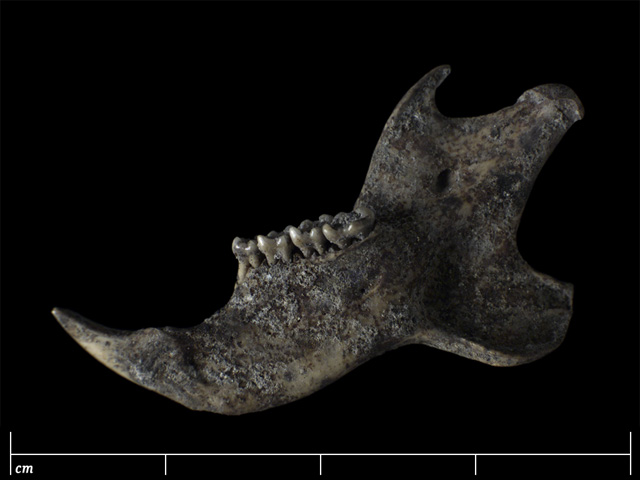 STUDIO PHOTOGRAPHS
STUDIO PHOTOGRAPHSIntroduction | Research | People | Tools
 STUDIO PHOTOGRAPHS
STUDIO PHOTOGRAPHS
MANDIBLE OF SQUIRREL (TYA 642: 1140)
Type: Right mandible of squirrel (Sciurus vulgaris), unburnt bone.
Use: Fur-bearing animal (faunal residue).
Site: Raisio, Ihala, Mulli abode.
Period: Viking Age / Crusade Age / Early Middle Ages.
Dating: 980-1220 A.D.
Size: Ca. 30 mm x 10 mm.
Weight: 0.5 g
Photographer: Antti Huittinen.
Hunting of fur animals was an important form of economy in the Iron Age and Early Middle Ages. One of the most important fur animals was the squirrel. The modern Finnish word for money, raha, meant originally a squirrel-skin. According to the folklore, the squirrel wasn't allowed to be killed before the summer fur had fully changed into winter fur, i.e., the skin was clean.
Squirrels could be hunted with traps and gins or shot with a blunt arrow which didn't penetrate the skin. Squirrel meat is edible. The meat might be simmered in the oven with turnips or be prepared to a soup. It is said that a man's single portion consisted of five squirrels.
Besides squirrels, the inhabitants of Mulli also hunted other fur animals, like lynx, bears, otters, and seals. Fur was used as a merchandise. The lead-bronze ingot with weight of 16 kg, discovered in Mulli abode, is surely an imported one. The inhabitants of Mulli bought by bartering luxury goods like beads, probably fabrics, wine and seasonings, too. Also salt was a remarkable good for importing.
Other related topics:
Coordinates: x=97, y=507, unit 2312.
Introduction | Research | People | Tools